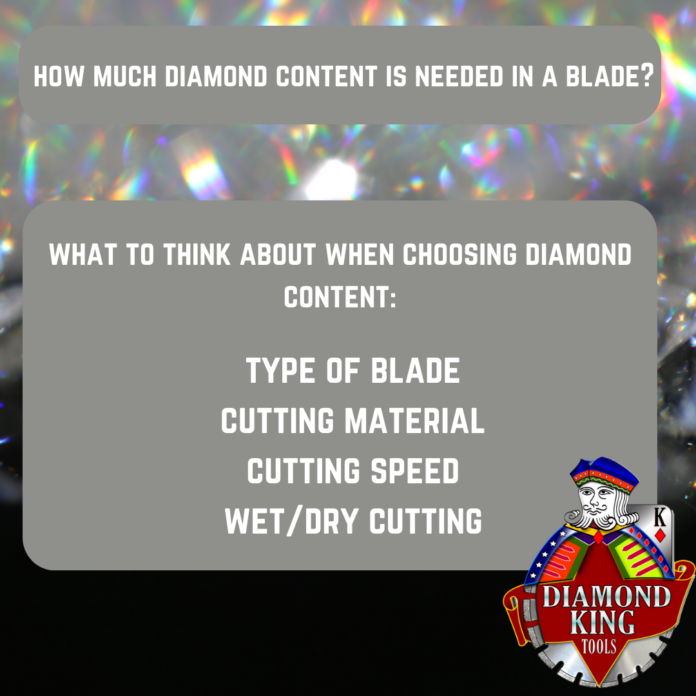Diamond blades are an essential tool in the construction and fabrication industries, used for cutting hard materials such as concrete, asphalt, stone, and ceramics. One of the key factors that determine the performance and durability of a diamond blade is the amount of diamond content it contains. In this blog post, we’ll explore the significance of diamond content in diamond blades and discuss how much diamond content is considered ideal.
Understanding Diamond Blades
Diamond blades are circular saw blades with diamond segments attached to the outer edge. These diamond segments are made up of small synthetic diamonds or diamond particles embedded in a metal matrix. The diamonds are the cutting edge of the blade, and they work by abrasion, grinding, and slicing through the material being cut.
Diamond Content in Diamond Blades
The diamond content in a diamond blade refers to the percentage of the blade’s surface area that is covered by diamond particles. Generally, diamond content is expressed in carats per inch (CPI) or carats per foot (CPF), indicating the weight of diamonds per unit of length.
Ideal Diamond Content
The ideal diamond content in a diamond blade depends on several factors, including the type of material being cut, the hardness of the material, the speed of cutting required, and the blade’s intended use (wet cutting or dry cutting).
For general-purpose diamond blades used for cutting concrete, asphalt, or similar materials, a diamond content of around 0.25 to 0.50 carats per inch (CPI) is considered sufficient. This level of diamond content provides a good balance between cutting speed, blade life, and cost-effectiveness.
For cutting harder materials like granite, marble, or engineered stone, diamond blades with higher diamond content may be needed. In such cases, diamond content ranging from 0.50 to 1.00 CPI or even higher may be preferable to ensure efficient cutting and extended blade life.
Quality vs. Quantity
It’s important to note that the quality of diamonds used in a diamond blade is just as crucial as the quantity. High-quality synthetic diamonds with uniform size and shape, along with a well-designed metal matrix, can significantly enhance the cutting performance and lifespan of a diamond blade.
Choosing the Right Diamond Blade
When selecting a diamond blade for a specific cutting task, it’s essential to consider not only the diamond content but also other factors such as blade diameter, segment design, bond type, and the type of saw being used (wet saw or dry saw). Consulting with experts or suppliers knowledgeable in diamond blades can help ensure you choose the right blade for optimal results.
In conclusion, the diamond content in a diamond blade plays a crucial role in its cutting performance and durability. While there is no one-size-fits-all answer to how much diamond content is ideal, understanding the factors that influence diamond blade performance can help you make informed decisions when selecting the right blade for your cutting needs. Balancing diamond content with diamond quality, blade design, and cutting conditions is key to achieving efficient and effective cutting operations.
